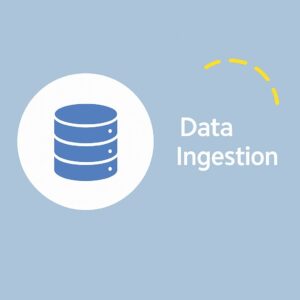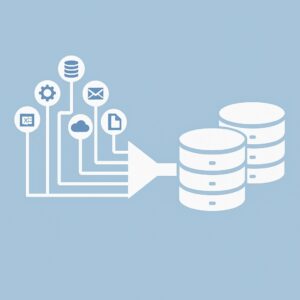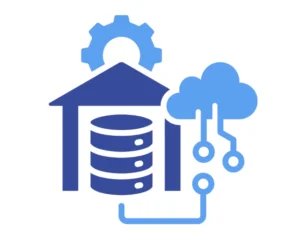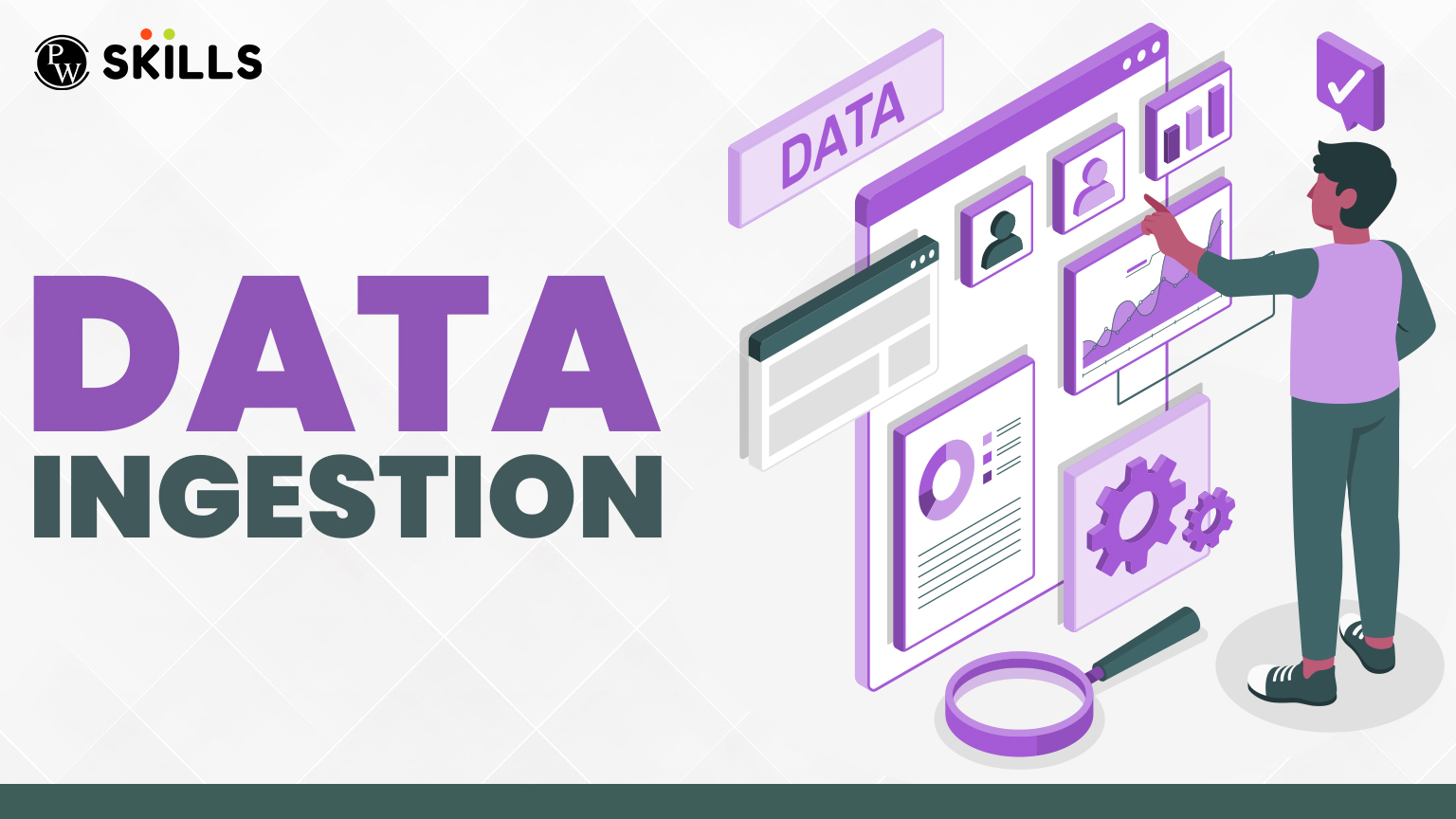Imagine you walk into a busy kitchen where dishes are prepared constantly from markets, stores, and farms’ ingredients. From multiple sources, raw data must be both gathered and also moved plus prepared within the digital world prior to when perceptions arise. This entire process is known as data ingestion indeed. For AI models plus dashboards and reports, data input is the most vital initial part of any exploration. This blog will break down data ingestion along with data ingestion types plus the best tools to explore how to build a strong data ingestion pipeline.
1. What is Data Ingestion?
Data ingestion essentially gathers data from many sources then moves it to a system for storage or processing. Websites along with mobile apps plus sensors as well as social media including APIs could all be included as sources. Manual uploads might also be included. Think of data ingestion as a system for delivering data to analysis sites from its creation site.
“What is data ingestion?” can be simply answered whenever someone asks about it: data ingestion is the act of the bringing of all that raw data into a central space such as a data warehouse or a data lake, so that it can be used efficiently at a later time. Reliable data workflows are hard to build. It is truly required to have a proper data ingestion pipeline.
 2. Why Does Data Ingestion Matter So Much?
2. Why Does Data Ingestion Matter So Much?
Today’s world sees businesses creating huge amounts of data constantly. But the raw data is truly useless unless it is delivered on time. The data should be delivered into the right systems in the right format. Ingestion of data is vital to the process. That is its purpose.
It helps:
- Live data ingestion pipeline enables decisions in real-time.
- Ingest user behavior data. Doing so improves upon customer experiences.
- Automation can be driven by feeding structured inputs. Automation is achieved through this way.
- Tools for fast data ingestion create power analytics dashboards.
- Build machine learning models by relying on the data ingestion of real-time data streams.
All subsequent processes endure when data ingestion lacks efficiency. Data ingestion that’s efficient stops the suffering. Imagine trying to cook without the timely arrival of ingredients. Perceptions disappear because a data ingestion process is delayed.
3. Types of Data Ingestion
Data ingestion methods include mainly two types.
Batch Data Ingestion
Data gets gathered then transferred as batches or chunks in batch data ingestion. These actions occur at scheduled intervals such as every hour, night, or week. It is effective and offers great value for recurring reports.
Real-Time (or Streaming) Data Ingestion
Real-Time Data Ingestion processes data continuously as data gets generated. Data ingestion in real time is indeed a necessity in use cases such as fraud detection, live analytics, or monitoring systems.
Some organizations meet varied needs by the use of a hybrid model. Data of that nature and its urgency dictate what is the correct ingestion pipeline.
4. Key Components of a Data Ingestion Pipeline
A well-designed data ingestion pipeline does much more than collect and transfer data. It includes multiple steps and layers, as below.
- Data originates in source systems which include apps, IoT devices, and logs.
- Ingestion Layer includes APIs with message brokers. It also includes tools which can ingest data.
- Protocols like HTTP and FTP or real-time tools such as Kafka transport data.
- Staging Area: Temporary storage to clean data or validate it
- Target Systems: Final destinations can include data lakes, warehouses, or else lakes. These are for the target systems.
- These layers all ensure data ingestion remains strong now. They also ensure that it remains scalable.

5. Top Data Ingestion Tools You Should Know
Powerful tools can automate and then manage data ingestion. This does make the process quite smooth. Here are some of the widely-used data ingestion tools now. They are commonly used.
- Apache Kafka works well for large-scale, real-time data ingestion pipeline setups.
- For Apache NiFi building: a UI easy for flexible data ingestion pipelines.
- AWS Glue: a cloud-native serverless tool for data ingestion
- Fivetran automates ingestion. It specializes within SaaS applications.
- Google Cloud Dataflow: tool for managed streaming and batch data ingestion.
- Talend: A leader within open-source data ingestion and ETL processes
Whenever you have to choose a data ingestion tool, you must always consider how much data there actually is, and whether it is compatible for use with your particular stack, and how long any latency actually takes, along with just how much it costs.
![]() Join Our Data Science Telegram Channel
Join Our Data Science Telegram Channel
![]() Join Our Data Science WhatsApp Channel
Join Our Data Science WhatsApp Channel
6. Common Challenges in Data Ingestion
Despite its importance, data ingestion isn’t always straightforward. Often teams challenge some encounters such as:
- Data that is duplicate, data that is missing, or data that is incorrect: Data Quality Issues
- Delay may be a big issue. This is especially true for real-time data ingestion pipelines.
- JSON, XML, CSV, etc.: Formats not compatible.
- Security & Compliance: GDPR, HIPAA within healthcare-related data ingestion are required.
- Ingestion Systems: High-velocity data sources overwhelm with scaling systems
- Data ingestion pipelines from each challenge can break if unaddressed.

7. How to Build an Efficient Data Ingestion Pipeline
A data pipeline that is streamlined ingests data in a clear way with steps.
Step 1: Identify data sources such as mobile apps, sensors, and also APIs.
Step 2: Decide between Streaming then Batch
Step 3: The Right Data Ingestion Tools Are Selected
Step 4: involves the transformation of data and it also involves the cleaning of data. This is done with reliability.
Step 5: Data is stored into the right target system.
Step 6: Logs and Metrics can Monitor Ingestion as a Step.
Think always about how to scale later. Build with the idea of that future scaling in mind for it. A data ingestion pipeline that is modular should be able to handle all growth.
8. Real-World Examples of Data Ingestion in Action
- To recommend shows Netflix ingests real-time data utilizing pipelines.
- Uber uses live data ingestion tools for tracking users and rides.
- Amazon continuously ingests shopping patterns. Browsing behaviors are ingested by Amazon continuously as well.
- Banks use data ingestion for credit scoring plus fraud alerts.
- Healthcare apps ingest wearable data. These are the apps which provide for patient perceptions.
What supports all these services? It is a backbone. A pipeline is ingesting rock-solid data now.
9. Data Ingestion and Career Opportunities
- Mastering data ingestion opens multiple tech roles up as data becomes the fuel of business.
- Data Engineers build ingestion pipelines.
- ETL Developers streamline transform workflows and ingest data.
- Architects of Big Data design data pipelines that are scalable.
- Cloud Engineers used by data ingestion tools like AWS GCP or Azure
To put data ingestion to practical use and learn just what it is sets you apart in the job market.
10. Courses and Resources to Learn Data Ingestion
For data ingestion expertise the best starting points exist here now.
- Coursera: Google Cloud’s Data Engineering exists.
- Streaming data pipelines get built by edX. EdX streams data through these pipelines.
- Udemy is offering data ingestion with Apache Kafka.
- PW Skills offers practical data ingestion pipelines within their Data Science course
- YouTube: Videos give hands-on experience with popular data ingestion tools.
- Focus instead on the building of projects and on learning just how to use such tools as Kafka, Airflow, and Talend.
11. Why You Should Care About Data Ingestion
It is important to understand just what data ingestion is and how it can be managed. This is true for you whether you are a student or a working professional within today’s data-centric world. AI systems are built with it, automation is driven, and smart decisions are made. Your perceptions, lacking proper data ingestion, will always be incomplete.
If you invest the time needed to understand data ingestion tools and data ingestion types plus their challenges, that is the first step as you become a problem solver who is very data-driven.

Also Read:
- An Effective 2025 Guide to Data Pipelines: Components, Types & Real-World Use Cases
- What Is a Data Warehouse? A Major Shift With Cloud Data Warehouse
- Data Scrubbing 101: What It Is, Why It Matters & How to Clean Data Effectively
- Data Farming Explained: 5 Modern Methods, Future Opportunities
12. Looking to Master Data Ingestion from scratch?
Data Science course with Gen AI offers practical, beginner-friendly training with real-world projects and industry tools like Python, SQL, and ML to gwt master in Data Ingestion from base. This PW Skills’ course make you job-ready with a curriculum designed by top experts. Enroll Now.
FAQs
Is coding required to learn data ingestion?
Basic coding skills in Python or SQL help, but many tools offer no-code or low-code interfaces.
Can I use Excel files in data ingestion pipelines?
Yes, many ingestion tools support Excel and CSV files as input sources for batch processing.
How long does it take to build a simple data ingestion pipeline?
With the right tool and setup, a basic pipeline can be built in a few hours, depending on complexity.

